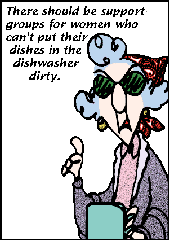
If adhesive tape residue has you stuck in a mess, get unstuck with these six tips.
Here’s the thing: The reason we love to use adhesive tape – because it sticks – is the same reason we loathe it when it won’t come off. And that sticky, gooey residue left behind? What a mess!
Why does this happen, and what can you do about it? Our Corporate site did a great job explaining why residue occurs, but what you really want to know is… what can you do about it, right?! Well, friends, as tape experts, we have answers!
First of all, its important to know your surface, and then choose the correct tape. Duct tape on drywall? Not a good idea. A little research will go a long way in preventing any sticky issues.
Always, always clean and dry your surface before applying tape. Dirt, grease, lint, old paint, wet paint, plaster… it all increases the probability of extra adhesion.
Consider updating your tape. Removing the old tape, cleaning the surface and applying fresh tape reduces the adhesion build-up. This is especially true of masking tape.
That said, if adhesive tape stains have you stuck in a mess, get unstuck with these six tips:
- Be Careful. Please test your residue remover in an unnoticeable area first to make sure there will be no damage to the surface. This is especially true for wood!
- Make it quick! Think of tape like a band-aid. Removing it slowly allows flow and separation, creating more stickiness (and pain!), while ripping it off in one motion makes for a clean, less painful removal.
- For household surfaces such as acrylic, plaster, asphalt, copper, enamel, glass, linoleum, marble, pewter, plexiglass and all things vinyl, all you need is warm, sudsy water. The warm water will soften the tape so it can be removed with a sponge or cloth.
- Use a hairdryer. Much like warm water softens tape, warm air will loosen adhesiveness as well. Just one minute is all you need, and then you can use soapy water to finish the job.
- Stone surfaces such as bluestone, brick, concrete, granite, limestone, terrazzo and masonry tile require a different technique. Do not use soap. It will leave a hard-to-removes scum. Instead Mix together a solution of laundry detergent or baking soda with a little water to form a paste. With a soft brush (a toothbrush is good for small areas) gently spread the solution over the gummy portion until it is removed, and then rinse with clear warm water
- Still more residue?? Consider using a little rubbing alcohol, which is a non-solvent for pressure-sensitive adhesives. When you apply rubbing alcohol, the adhesive residue will lose its adhesion and will precipitate. Wipe your surface with a dry cloth, which should leave the surface clean, although excess residue can even be picked off using another piece of tape.
from: https://www.echotape.com/2014/04/17/six-simple-solutions-to-remove-tape-residue/

